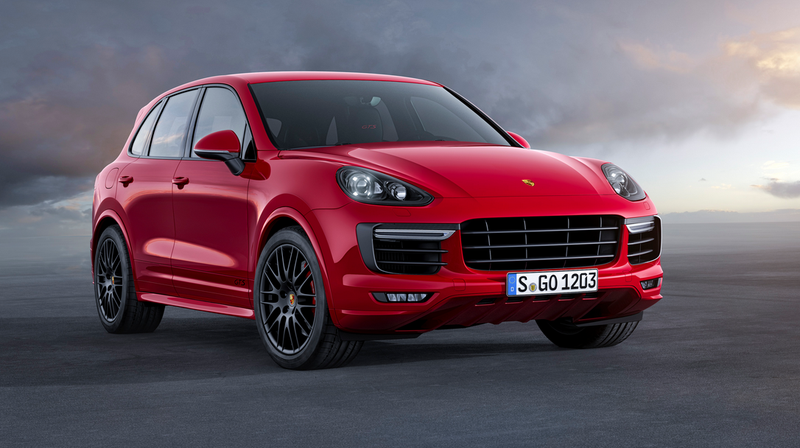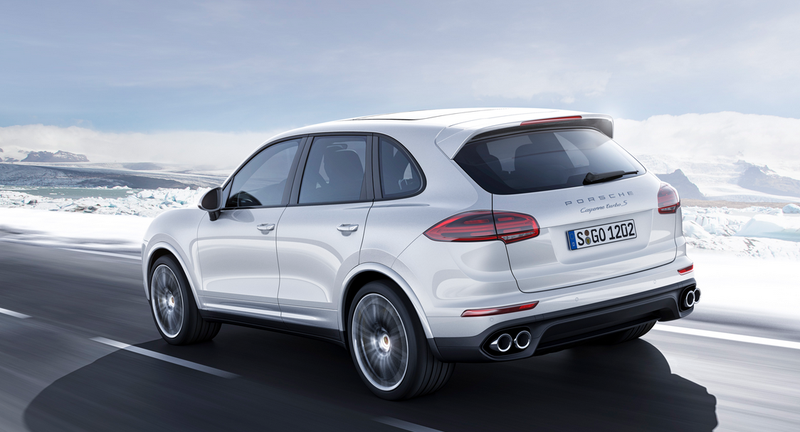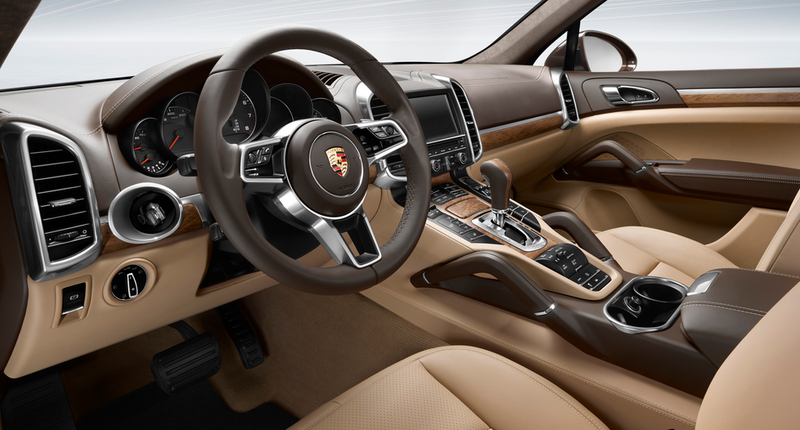
The Cayenne is the SUV that allows Porsche to continue to build crazy sports cars but that doesn’t mean it isn’t a little guano itself. What do you need to know before you buy a Porsche Cayenne? Don’t worry, we’ll tell you everything right here in the Ultimate Buyer’s Guide.
When Porsche engineered the cars that eventually became the rear-engined, RWD Porsche 911 they created for themselves a physics problem that they’ve spent generations trying to solve. The same can be said for the Porsche Cayenne.
How do you build a car that’s fast enough and enjoyable enough to deserve a place in Porsche’s stable while also designing essentially a tall hatchback that’ll appeal to suburbanites and people who might actually go off-road? Simple, you build the Porsche Cayenne.
Advertisement
We’ve now gotten used to the idea of an SUV/CUV that can actually be quick and not a chore to drive, but Porsche gets credit for getting there first. The first generation Cayenne was good and the second generation Cayenne is even better, blending comfort and luxury and speed in a package that makes even the most hardcore Porsche fanboy admit that, yeah, this is a pretty stellar vehicle.
What It’s Like To Drive
You shouldn’t take the Cayenne in any trim to the track unless you’re towing your 928 race car, but if you know what you’re doing and should happen to end up on the track with a Cayenne Turbo S you will embarrass many people. The Cayenne is a car-like crossover that is so loaded with power and electronic nannies that you can point it into a turn, bring in way too much speed, and it’ll usually keep you out of a wall.
Sponsored
On the track the car is always fighting its heft and center of gravity to keep the nose pointed in the right direction but, if you’re not a complete knob, it’s a fight it will always win.
You shouldn’t take the Cayenne in any trim off-roading unless you’re being chased by the evil henchman of a secret apocalyptic organization, but if you have some sense of non-pavement driving and mind your breakover angle you can get surprisingly far. Yes, in making the Cayenne more car-like they dropped the low-range transfer case, but they also dropped three passengers worth of weight and with the right tires you can do anything that any other softroading CUV can do.
Where you should take your Cayenne is any regular civilian road you’d take any other car. In the mall parking lot you’ll have the tall seating position and good view you’ll want to snake a good space. On the highway the much lighter second gen Cayenne will absorb miles like your average blogger absorbs antacid tablets.
What’s New About The 2016 Porsche Cayenne

The second generation Porsche Cayenne made its debut at the Geneva Motor show in 2010 and was later released in the U.S. as a 2011 model. That Cayenne was larger than its predecessor, more powerful, lighter (thanks to use of aluminum and magnesium) and even more fuel efficient.
Advertisement
The new Cayenne also brought all new styling to both the cabin and the exterior. In addition, the second generation Cayenne brought a hybrid model and a new all-wheel drive system, though there is no longer a low range like there was in the old Cayenne, with a new 8-speed and its lower first gear ratio, the new Cayenne still promises to hold its own in the rough stuff.
When the Cayenne launched, it was available in only Cayenne, Cayenne S, Cayenne S Hybrid and Cayenne S Turbo trims.
The second year of production, 2012, didn’t bring much of a change to the Cayenne besides a Power Kit option, which cranks up the power an additional 40 ponies.
In 2013, Porsche added two new Cayenne models: the Cayenne Diesel and the Cayenne GTS. The diesel offered a 3.0-liter 240 horsepower V6 while the GTS came with a slightly tweaked version of the 4.8-liter naturally aspirated V8 from the Cayenne S, except instead of producing 400 horsepower, the GTS made 420.
The big gun came to town in 2014, and by “big gun,” we mean the Porsche Cayenne Turbo S, which debuted with a 550 horsepower 4.8-liter twin-turbo V8.
Then, in 2015, Porsche made some huge changes. They ditched the Cayenne S’s 4.8-liter naturally aspirated V8 in favor of a 3.6-liter twin-turbo V6 very similar to the one used in the Macan Turbo. In addition to the new mill for the Cayenne S, the Cayenne S E-Hybrid debuts as “the world’s first luxury SUV with a plug-in hybrid drive.”
The new hybrid model is not only more powerful and faster than the outgoing model, but it’s also more efficient. It uses a 10.8 kWh lithium-ion traction battery whereas the old hybrid model had only a 1.7 kWh nickel-metal-hydride battery.
The only models available for 2015 were the diesel, the hybrid, the Cayenne S and the Cayenne Turbo.
But fear not, as 2016 models are out now and among them are the new Turbo S and GTS models. The fresh Turbo S is now more powerful, making 570 horses instead of the outgoing model’s 550. Since the Cayenne S got a new engine for 2015, the GTS ditches its old NA 4.8-liter V8 in favor of a tweaked version of the Cayenne S’s twin-turbo V6.
Powertrain Breakdown
Power! Yes, there’s plenty of power in the Cayenne engine lineup. The diesel brings up the rear with 240 ponies, but it cranks out tons of torques. 406 to be exact. Still, even with only 240 shetlands, the diesel will get to 60 in about 7.2 seconds.
That’s actually faster than the lighter, more powerful base Cayenne, whose 300 horsepower naturally aspirated V6 propels it to 60 in 7.3 seconds.
Then there’s the Cayenne S E-Hybrid, whose electric motor puts out 95 horsepower @ 2,200 rpm and 229 lb-ft of torque at 0 rpm. That powerful motor, combined with a 3.0-liter supercharged V6 with 333 horsepower at 5,500 rpm and 325 lb-ft at 3,000 rpm results in a total system output of 416 horsepower and 435 lb-ft of torque. Those are big numbers. Big enough to get the 5,181 pound behemoth to 60 mph in 5.2 seconds.
Next up is the Cayenne S, which makes 420 horses, and the GTS, which gets a tuned version of the S’s engine and makes 20 more horsepower for a total of 440. The Cayenne S will do a 5.2 second zero-to-60 pull, while the “sport-oriented” GTS will get there in four tenths of a second quicker.
At the top of the line, you’ve got the Cayenne Turbo and Turbo S. Firebreathers by any account, these puppies put out 520 and 570 stallions, respectively. The Turbo gets to 60 mph in 4.2 seconds, and the Turbo S gets the enormous 4,927 pound SUV to 60 in an incredible 3.9 seconds.
2016 Porsche Cayenne Engine Options
Engine Max_Horsepower (hp) Max_Torque (lb-ft) 3.0L
Turbodiesel240 @ 3800 rpm 406 @ 1750 rpm
3.0L Hybrid416 @ 5500 rpm
435 @ 1250 rpm3.6L V6 300 @ 6300 rpm 295 @ 3000 rpm
3.6L
Twin-Turbo V6
420 @ 6000 rpm (S)
440 @ 6000 rpm (GTS)
406 @ 1350 rpm
442 @ 1600 rpm4.8L
Twin-Turbo V8
520 @ 6000 rpm
(Turbo)
570 @ 6000 rpm
(Turbo S)553 @ 2250 rpm 590 @ 2500 rpm
Fuel Economy Breakdown
You don’t buy a Porsche Cayenne for its fuel economy, and the numbers below show exactly why. The diesel, which is no longer being sold due to a stop-sale, is the only one that even gets close to reaching 30 MPG on the highway.
“But what about the hybrid?” you ask. Well, it gets 47 MPGe, which is great, except that the hybrid can only go about 14 miles before it runs out of juice. Then you’re stuck using the 3.0-liter supercharged V6, which gets only 22 MPG combined.
The base model’s 3.6-liter V6 scores 21 MPG combined, which isn’t far off from the 120 horsepower stronger Cayenne S’s 20 MPG. The Cayenne GTS manages 19 MPG and the Turbo and Turbo S score 17 combined.
So, not a strong showing from the Cayenne on the fuel economy front, but go figure.
2016 Porsche Cayenne Fuel Economy Ratings (City/Hwy/Combined)
– 3.0L Turbodiesel V6 3.0L Supercharged
Hybrid V63.6L V6 3.6L Twin-Turbo V6 4.8L Twin-Turbo V8 8-Speed
Automatic20/29/23 47 MPGe (combined)
21/25/22
(gas only)19/24/21 17/24/20 (S)
16/23/19 (GTS)14/21/17
Trim Level Breakdown

Porsche offers seven different Cayenne models: Base, Diesel, S, S E-Hybrid, GTS, Turbo and Turbo S, all of which come with all-wheel drives as standard.
Steering for all Cayennes is electric and suspension is an aluminum double wishbone up front and an aluminum multilink in the rear. Brakes on most trims are six piston calipers up front squeezing 14.2-inch discs and four piston calipers out back squeezing 13-inch rotors. The GTS and Turbo models get bigger bigger 15.35-inch pizzas up front and 14.1-inch plates in the back.
The Turbo S, steps it up another not and not only gets bigger rotors, but also new calipers. The Turbo S gets huge 16.5-inch saucers up front and 14.6-inchers in the rear. The back calipers are the same as the other Cayenne trims, but the front gets 10-piston calipers. Ten pistons!
- Base: Starts at $58,300. Notable standard features: 3.6-liter V6 with Auto Start Stop, 8-speed Tiptronic automatic transmission with paddle shifters, all-wheel drive, bi-xenon headlights, LED daytime running lights, 18-inch alloy wheels, power adjustable front seats, partial-leather seats, Porsche Communication Management infotainment system with seven-inch touchscreen, two-zone climate control, power tailgate. Notable options: Porsche Active Suspension Management ($1,990); Air Suspension with Porsche Active Suspension Management ($3,980); Porsche Dynamic Chassis Control ($3,510); Porsche Torque Vectoring Plus ($1,490); Porsche Ceramic Composite Brake ($8,520); Sport Chrono Package: analog and digital timer, performance display in PCM infotainment system ($770); Sport Exhaust System ($2,950); Off-Road Underbody Protection ($1,330); Infotainment Package w/ HD Radio: Bose Surround Sound, satellite radio ($1,990); Premium Package: Power Steering Plus, Comfort Lighting Package, Park Assist with reversing camera, bi-xenon headlights including Porsche Dynamic Light System, auto-dimming mirrors, power moonroof, 14-way power seats with memory, front heated and vented seats ($5,690); Premium Package Plus: Premium Package, rear heated seats, LED headlights, proximity keyless ignition, rear power sunblind, Lane Change Assist ($9,090); Sport Package: Sport Chrono Package, Air Suspension with Porsche Active Suspension Management, Sport Exhaust System ($5,590); Adaptive Cruise Control with stopping feature ($2,300); Lane Departure Warning with Lane Change Assist ($1,540); Front seat heating ($525).
Diesel: Starts at $62,300. (No Longer Available) Notable standard features over Base: 3.0-liter turbodiesel. Other standard features similar to Base trim. Notable options: Similar to Base, except no Sport Exhaust System available (only sport tailpipes).- S: Starts at$74,800. Notable standard features over base Cayenne: 420 horsepower 3.6-liter twin-turbo V6, 19” alloy wheels, power steering plus. Notable options: Premium Package: Panoramic Roof, bi-xenon headlights with Porsche Dynamic Light System, auto-dimming mirrors, Comfort Light Package, ParkAssist with reversing camera, power 14-way heated and vented front seats with memory ($4,090); Premium Package Plus ($7,490). Other options similar to base Cayenne.
- S E-Hybrid: Starts at $77,200. Notable standard features over base Cayenne S: 3.0-liter supercharged hybrid V6, Porsche Active Suspension Management, green brake calipers. Notable options: Sport Package: Sport Chrono Package, Air Suspension, Sport Tailpipes ($2,600); Air suspension ($1,990); Otherwise similar options to Cayenne S.
- GTS: Starts at $95,500. Notable standard features over Cayenne S: 440 horsepower 3.6-liter twin-turbo V6, SportDesign package, black exterior package, tinted LED taillights, Sports exhaust system with blacked-out tailpipes, air suspension with Porsche Active Suspension Management, bigger Turbo-model brakes with red calipers, 20” alloy wheels, leather interior with Alcantara, GTS sports seats with GTS embroidered logos, brushed aluminum interior package. Notable options: Infotainment Package w/ HD Radio ($1,990); Premium Package: Comfort Lighting Package, ParkAssist with reversing camera, Panoramic roof, power heated 14-way front seats with memory ($2,920); Premium Package Plus ($5,830); Porsche Dynamic Chassis Control ($3,510); Porsche Torque Vectoring Plus ($1,490); Porsche Ceramic Composite Brake ($8,840); Sport Chrono Package ($770); Adaptive Cruise Control with stopping feature ($2,300); Lane Departure Warning with Lane Change Assist ($1,540); Front seat heating ($525).
- Turbo: Starts at $114,700. Notable standard features: 520 horsepower 4.8-liter twin-turbo V8, 8-speed automatic transmission with paddle shifters, all-wheel drive, leather interior package, BOSE 858 watt surround sound, Porsche Communication Management with navigation module and 7-inch touchscreen, LED headlights with Porsche Dynamic Light System, air suspension with self-leveling and ride-height control with Porsche Active Suspension Management, 18-way power sport seats with memory, 19” unique wheels, LED daytime running lights, LED fog lights, front and rear heated seats, front and rear ParkAssist. Notable options: Premium Package: Comfort Lighting Package, vented front seats, panoramic roof ($1,690); Premium Package Plus ($3,660); Sport Package: Sport Chrono Package, Sport Exhaust ($3,210); Porsche Dynamic Chassis Control ($3,510); Porsche Torque Vectoring Plus ($1,490); Porsche Ceramic Composite Brake ($8,840); Sport Chrono Package ($770); Adaptive Cruise Control with stopping feature ($2,300); Lane Departure Warning with Lane Change Assist ($1,540).
- Turbo S: Starts at $157,300. Notable standard features over Cayenne Turbo: 570 horsepower 4.8-liter V8, Porsche Torque Vectoring Plus, Porsche Dynamic Chassis Control, 21-inch alloy wheels, bigger Porsche Ceramic Composite Brakes. Notable options: Premium Package Plus ($3,240); Sport Exhaust System ($3,210); Off-Road Underbody Protection ($1,330); Adaptive Cruise Control with stopping feature ($2,300); Lane Departure Warning with Lane Change Assist ($1,540).
Which One We’d Buy
If you’re going to be hauling your race car then you’ll be best off with a Cayenne Diesel if/when that goes on sale again, but the Cayenne GTS is much like other GTS Porsche models in that it offers a little more power and many more options for a lower price than if you tried to configure an S yourself. In addition to the additional 20 horsepower you also get a more aggressive body kit, bigger brakes, the sport exhaust, 20-inch RS Spyder Design wheels, sportier seats, and alcantara bits. It’s a $20,000 premium over a base Cayenne S, but if you’re in the higher end of the SUV market that’s a value.
[Build Your Own Porsche Cayenne]
Important Facts At A Glance:
MSRP: $58,300-$157,300 Top Speed: 176 MPH [Turbo S]
Acceleration: 3.8s to 60 [Turbo S]
Max Advertised Towing Capacity: 7,716 pounds
MPG: 20 city / 29 hwy / 23 combined [Diesel]
Engines: 3.0L Turbodiesel, 3.0L Supercharged Hybrid V6, 3.6L V6, 3.6L Twin-Turbo V6, 4.8L Twin-Turbo V8
Max Horsepower/Torque: 570 hp/590 lb-ft [Turbo S]
Curb Weight: ~4,488-5,181 pounds IIHS Safety Rating: NA
Transmissions: 8-Speed Automatic
Drivetrain Layout: Front Engine, 4WD
Photo credit: Porsche













